Family: Apiaceae Lindl.
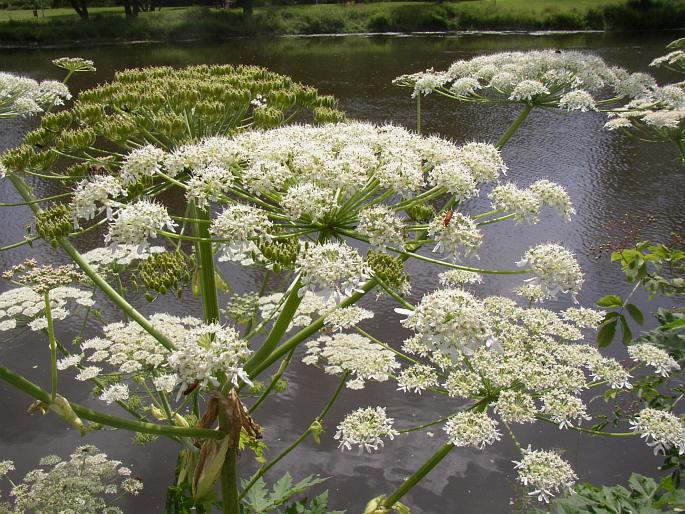
Distribution: The Giant Hogweed is native in the western part of the Caucasus. It was introduced to Britain, France and Bohemia in the 19th century for ornamental reasons. It is now widespread in central and western Europe, North America, Argentina and Tasmania.
Ecology: It grows on wet meadows, forest margins, ditches, along streams, in disturbed sites. It is an aggressive and rapidly spreading plant, it displaces native plants. Blooms from June to September.
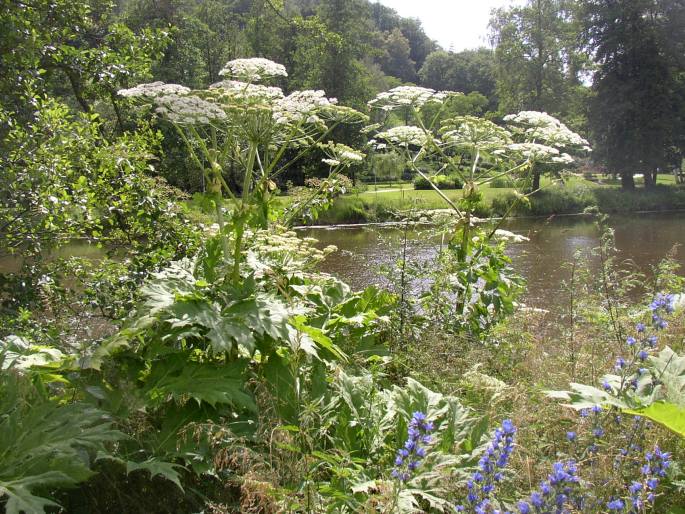
Description: Biennial, monocarpic, or perennial herb. Stem erect, 170–500 cm tall, up to 10 cm in diameter, usually with conspicuous purple blotches. Leaves petiolate, up to 300 cm, ternate, or ternately or pinnately divided in varying degree, with lateral segments up to 130 cm, pinnately lobed, shortly pubescent beneath. Umbels up to 50 cm in diameter, with 50–150 rays; petals up to 12 mm, white, outer radiate. Fruit 9–11 × 6–10 mm, glabrous to villous.
Note: All parts of the plant are highly toxic. Its sap can cause phytophotodermatitis when the skin is exposed to sunlight.
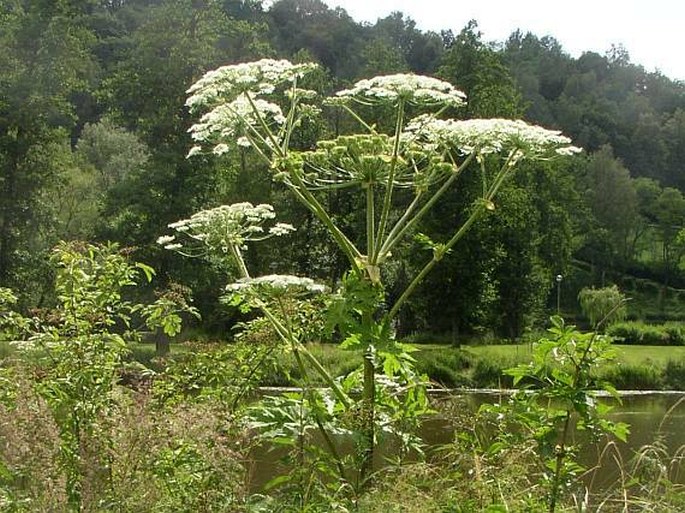
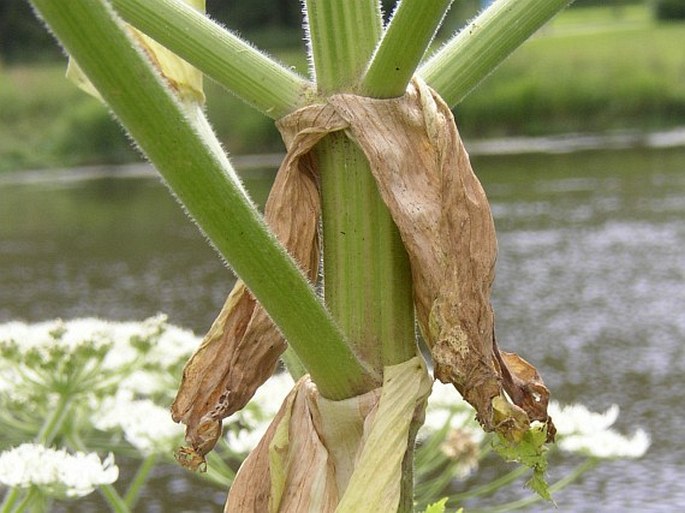
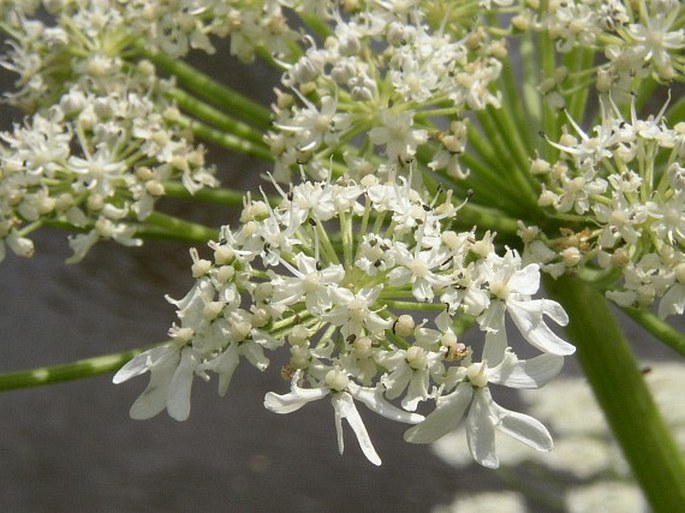
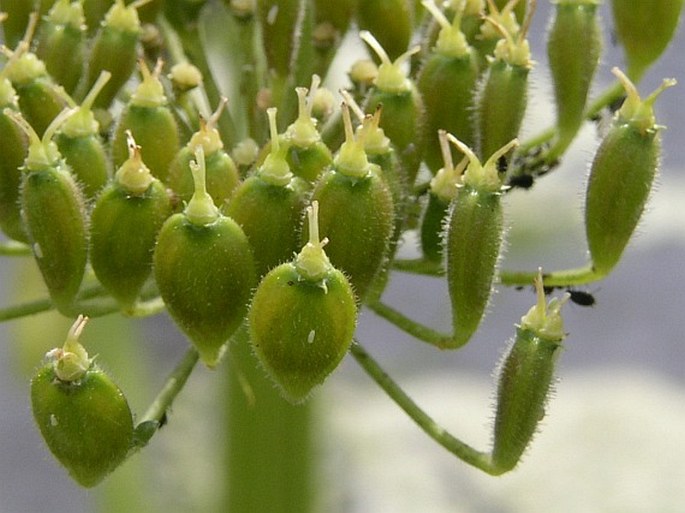
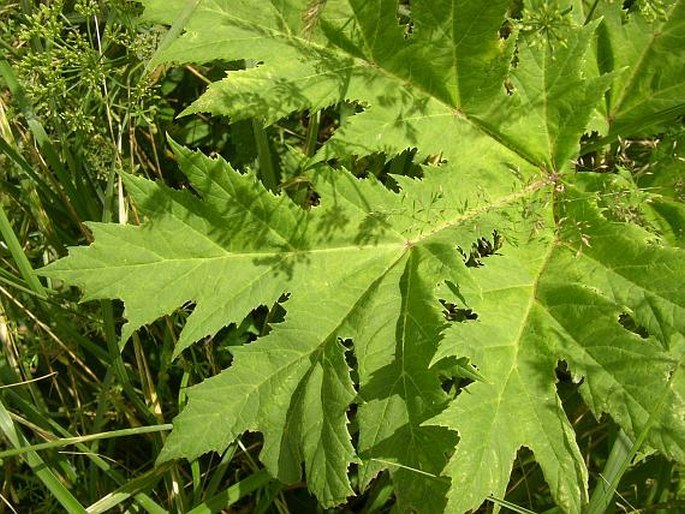
These images were taken in Czechia, Bohemia, Sokolov (July 1, 2007).


